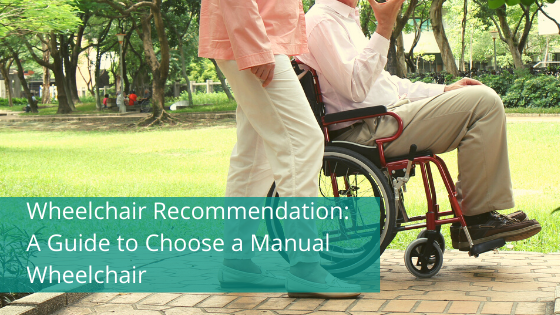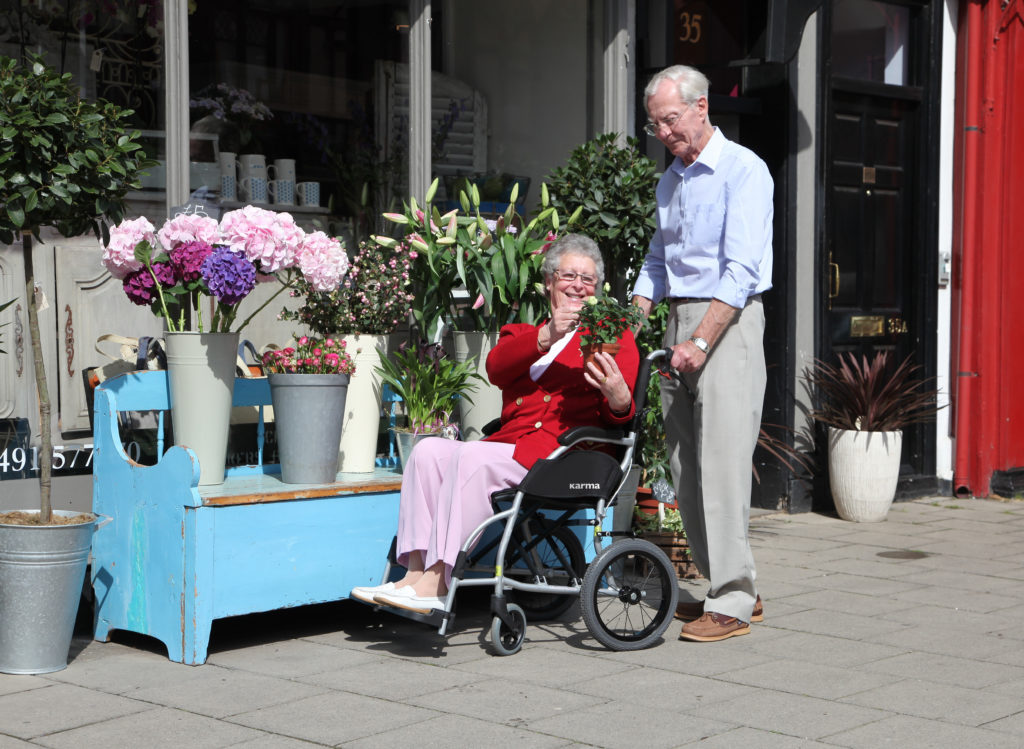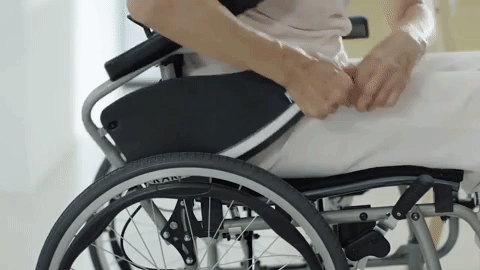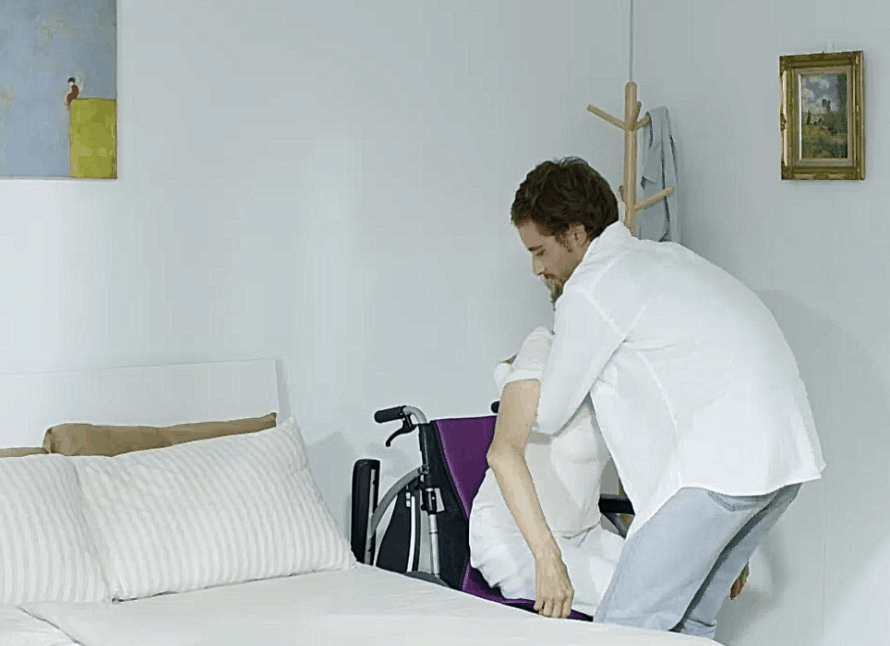
All the time we hear these questions from families of wheelchair users or users themselves:
- Are all wheelchairs the same? I can’t see a difference…
- There are so many models and brands! Which one is the most suitable for me?
- There are also different wheelchair sizes? If I buy the bigger one it will be more comfortable and cost-effective?
Most of the time, people will ask these questions when they haven’t been properly assessed by a therapist. During the examination and evaluation process, a therapist will recommend what assistance and aids a person needs, not just “what wheelchair to buy”. Professional therapists understand a patient’s problems and what kind of challenges they might encounter later down the line. On a case by case basis, they will make a professional decision.
An idea of what a professional therapist might base their assessment on can be found here, an example of the evaluation form of the patient’s abilities that they consider. After the assessment, the user or family can tell the wheelchair company what it is that they need.
What are the different levels of manual wheelchair users?
The different levels of motor function in a patient can be split up into five levels. The idea is similar to that being used by GMFCS, originally developed to differentiate the functions of cerebral palsy patients, it is actually very useful here too. Being able to separate these levels not only makes it easier for the therapist to communicate to the patient but it helps to roughly estimate what assistive devices are necessary at each rehabilitation stage. Depending on the user’s category, the right wheelchair might be all they need.
Elderly wheelchair users who also have elderly caregivers can benefit from a lightweight wheelchair that is easy to store and transport. One of KARMA’s best selling lightweight wheelchairs is Ergo Lite.
Level 1: They can run and jump on flat ground
At this stage, they probably won’t need a wheelchair. However, if the patient feels like it would make their daily life easier, then they can consider a simple wheelchair.
Level 2: They can walk on flat ground without any problem, but walking on uneven ground is difficult
At this stage, they may need to take precautions to prevent potentially fatal falls. They may need crutches or an umbrella to stabilize themselves when walking. To make it simpler and safer, the patient can consider using a wheelchair short-term. Sometimes a wheelchair can be used to help the caregiver of disabled children or the elderly when they take trips outdoors, as it is easier to look after them.
Level 3: They can walk by themselves but need the support of others or stable objects
Whether it is because of an injury, surgery, or physical discomfort, sometimes a patient is not able to stand for a long time without needing to hold on to something.
Although they are still able to walk, we recommend for the safety of the user and caregiver, to start using a wheelchair. If they are only going to use it for a short period of time (2-3 months) for rehabilitation purposes, they could rent or buy a second-hand wheelchair.
Renting a KARMA wheelchair in Malaysia is easy, especially for short term users. Compare the price of renting a wheelchair short term versus purchasing one.
There are a lot of basic wheelchair models on the market, with the most popular ones adapting a lightweight design. A lightweight wheelchair makes it easier for caregivers to transport and store the device in small spaces. But remember that in addition to a wheelchair being lightweight, the wheelchair must be stable to be safe.
Level 4: They cannot walk, but they can maintain their posture in a chair with armrests
At this stage, the patient can no longer transfer in and out of the wheelchair by standing up. However, there will be situations in the future that requires getting in and out of the wheelchair. For example, getting in and out of bed, visiting the bathroom, getting in and out of the driver’s seat (yes, it is possible for wheelchair user’s to drive).
Detachable arm and leg rests can make getting in and out of a wheelchair much easier. Armrests and leg rests can be lifted, rotated, or even removed so that the user can transfer to the wheelchair from the side (the gif below is a great example of how to much easier it is to transfer a wheelchair user when the armrests flip back).
S-Ergo 125 has flip-back armrests to make transferring in and out of the wheelchair easy. Source: KARMA Medical YouTube – S-Ergo 125 Source: KARMA Medical YouTube: How to use Detachable Swing-away Footrest
At this stage, for a better quality of life and mobility, wheelchair users can consider using a lightweight electric wheelchair.
To a variety of different body types, the highly adjustable wheelchair is being developed. This wheelchair has more options for the seat width and depth as well as seat height, back height, back angle, armrest height, and rear-wheel centre alignment all being adjustable. KARMA wheelchairs can be equipped with these adjustable features or later altered according to the user’s recovery status.
Level 5: When they are sitting in a chair with armrests, they cannot maintain an upright posture
If a family member reaches this level, they need a positioning wheelchair.
The back height of a regular wheelchair only reaches shoulder height but a positioning wheelchair will extend to reach the top of the patients head with a headrest that will support the weight of the upper body. There are two types of positioning wheelchair; one that is reclining and the other that will ‘Tilt-in-Space’.
Further reading: learn about the full benefits of a reclining and tilting wheelchair.In the past, the choice of which positioning wheelchair to choose was limited to only one of these features or the other, however, now there are reasonably priced products on the market that function as 2-in-1. The following diagram should give a brief idea of the different movements each wheelchair offers.
We’re here to help
With these basic concepts in mind, you can keep reading about the Benefits of a Reclining and Tilting Wheelchair next.If you need further assistance choosing a wheelchair will best suit you, KARMA Malaysia is always here to assist. Talk to a KARMA representative today!
Call us: 03-5612 1921 / 010 – 238 1921
Email us: [email protected]






